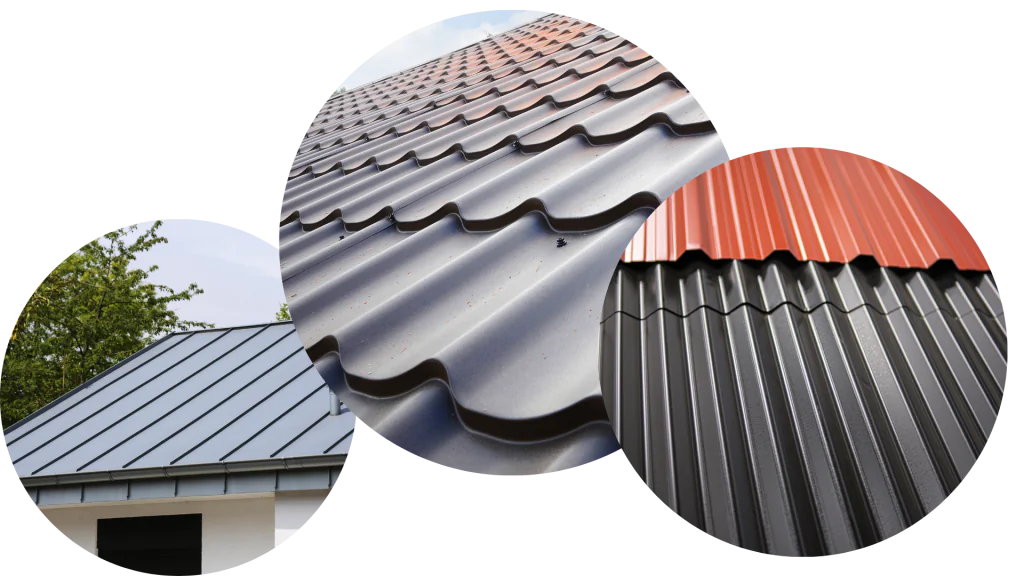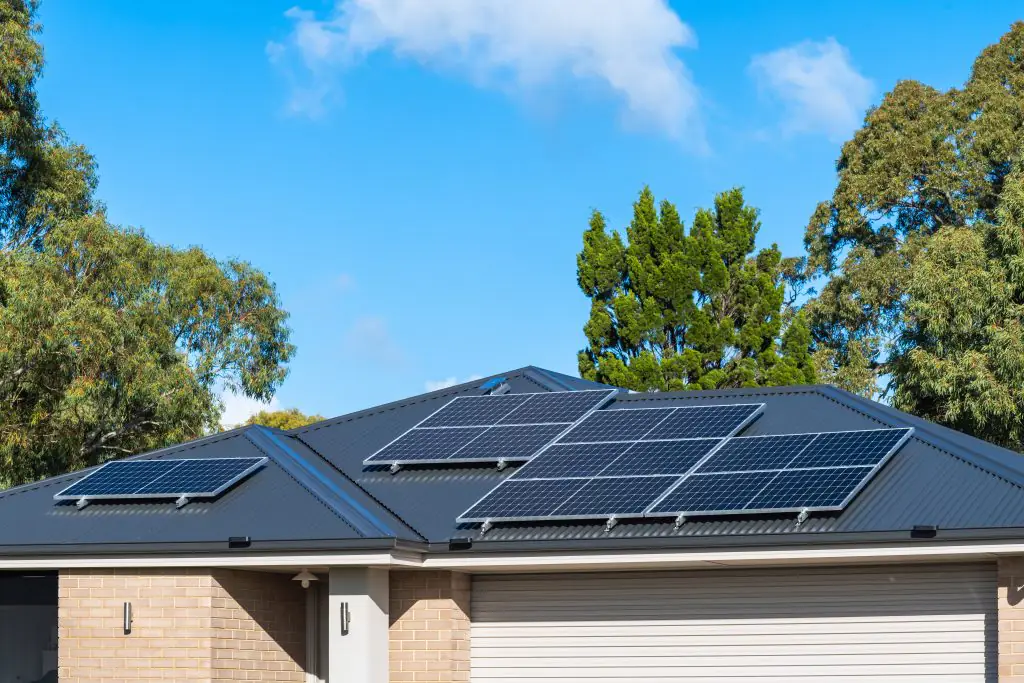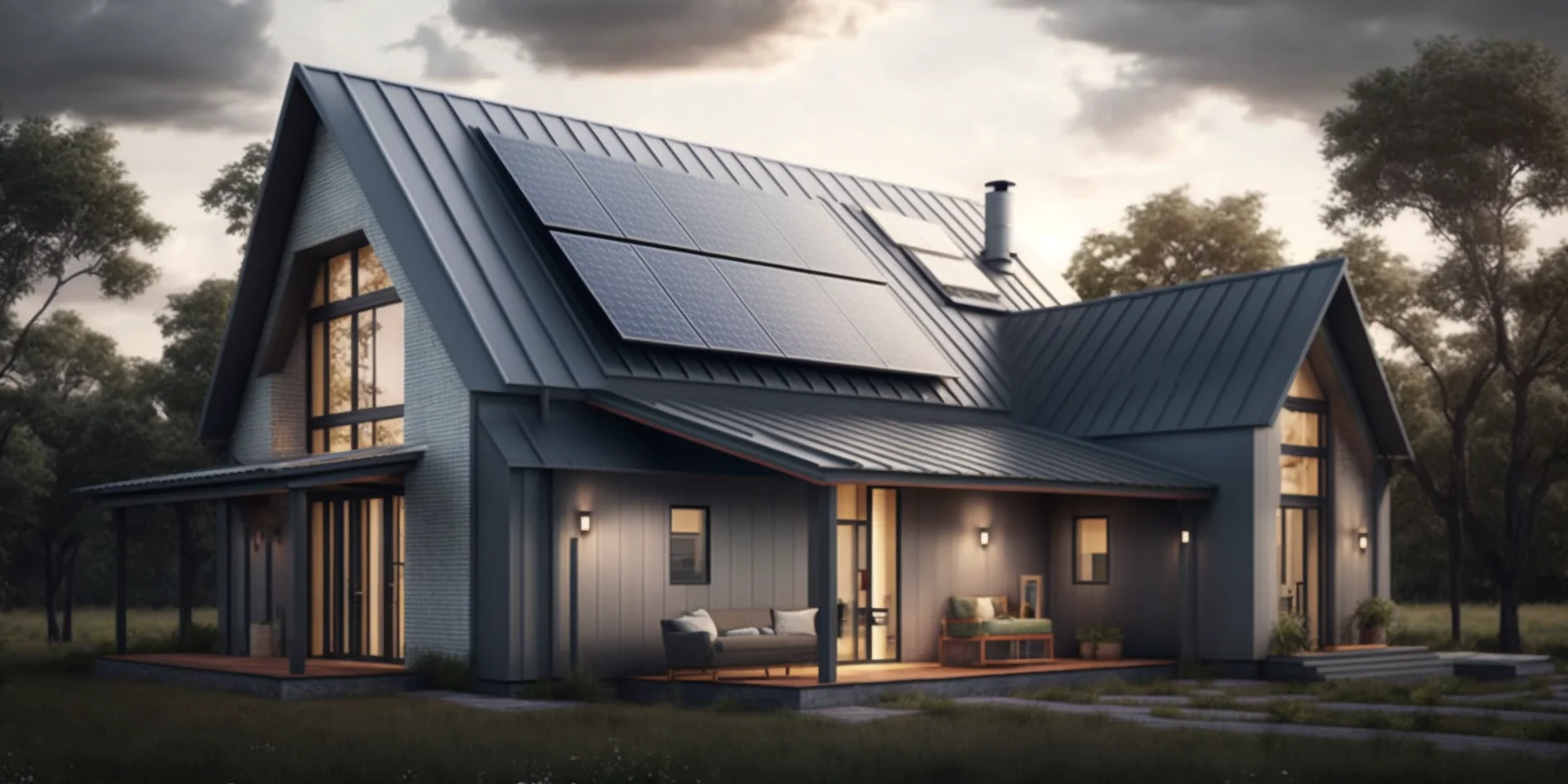The popularity of metal roofs is increasing, leading to more consumers considering the installation of solar panels on them. While asphalt roofs are the most common roofing material in North America and are typically paired with solar panels, metal roofs have their advantages. This article will discuss why metal roofs are an ideal choice for solar panel installation and the drawbacks of installing solar panels on other types of roofs.
Can I Install Solar Panels On A Metal Roof?
Metal roofs are often the best roofing material for the installation and long-term use of solar panels. Standing seam panel roofs make for the most compatible roof types as they require no drilling during installation, and instead, utilize clamps to attach rail systems and panels.
Metal roofs and solar panels are a great match for so many different reasons, and often offer valuable benefits most consumers overlook. Below, we’ll break down why more consumers should consider pairing their solar panels with metal roofs, and the drawbacks of installing solar panels on asphalt, wood, or cedar roofs.
Metal Roofs Are Often Easier To Install Solar Panels On
There are three main types of metal roofing:
- Standing seam metal roofs
- Metal tile roofs
- Corrugated metal roofs

Standing seam metal roofs are by far the best option for solar panel installation. Standing seam roofs require zero drilling during the installation of solar panels or rail systems. Instead, metal clamps are used to secure the panels in place and are fastened directly to the seams of the roof. This makes for a simple, smooth, and secure installation process, and will provide the panels with a strong and secure foundation.
On the other hand, metal tile roofs and corrugated metal roofs will require penetration during the installation process. Although, these forms of metal roofing still have all the same benefits as standing seam roofs.
In contrast, asphalt, wood, cedar or any other form of the roof will require drilling into the roof during installation. Although drilling is a routing process of the majority of solar installations, if done incorrectly by the installer, it can cause major issues for homeowners like leaking, which can lead to rot and other roof-related issues. If a homeowner were to receive an improper installation by their chosen solar company, a warranty would likely be in place, and the homeowner would not be liable for damages caused directly by the installation.
A Metal Roof Will Outlast Your Solar Panels

Picture this, you’ve just had your new photovoltaic system installed, everything is up and running and you’re producing your energy. Life is great! You’re bragging to your neighbour about your new solar setup and your future ROI. Being on the topic of roofs he mentions he’s replacing his roof this year. Panic ensues, and you realize you’ll likely have to do the same within the next decade. The costs of tear-down, storage, reinstallation, and panel downtime flow through your brain. That future ROI begins to fall off a cliff, and you realize the mistake you’ve made.
Mind you that little story may be blown out of proportion, but it’s true, asphalt, cedar and wood roofs have shorter life spans than metal roofs. On average asphalt shingle roofs have a lifespan of 15-30 years, while most solar panels have an average lifespan of 25-30 years. In comparison, a well-maintained metal roof can have a life span of 50 to 60 years, and under the right conditions, sometimes even longer!
Essentially, when solar panels are installed on metal roofs, the concern of roof replacement and associated panel teardown and reinstallation costs are minor. Your panels will need replacement before your metal roof does.
Metal Roofs Provide Strength & Support For Solar Panels
A single solar panel can weigh up to 40 pounds, and can often cause weight distribution issues. Although, metal roofs are one of the best roofing materials for solar panels due to their ratio of strength to weight. Metal roofing is one of the strongest, long-lasting, and lightest forms of roofing material. These combined factors make solar installation a simple, easy, and painless process as homeowners and installers don’t have to worry about weight distribution as a potential concern.
In terms of more traditional roofs like asphalt, which is already extremely heavy, weight distribution can become a problem, in some cases, reinforcements have to be installed which increases your installation costs.
Solar Panels On A Metal Roof Can Reduce Cooling Costs
Having raised solar panels on your roof shades your roof from solar rays, allowing your roof to stay cooler during warmer months. In turn, this will reduce your home’s overall cooling costs. Now this benefit is not only exclusive to metal roofs, but complications can occur with humid climates, raised solar panels, and traditional roofs. Traditional roofs can experience fungal growth in shaded and moist areas, which can cause decay and lead to issues like leakage. It’s best practice for solar panels on traditional roofs to lay directly on the roof, although there are cases where raised panels can be installed.
Metal Roofs & Solar Panels Make For An Eco-Friendly Home
The combination of solar panels and a metal roof make for quite an eco-friendly home. Firstly solar panels are a source of green energy and are eventually recyclable at the end of their life. Secondly, metal roofing is nearly 100% recyclable at the end of its lifespan. The combination of these two assets will earn homeowners points through green building certification programs like LEED and ENERGY STAR.
Case Study: Sandy Thompson & Her Experience With Solar Panels
I was fortunate enough to learn that one of my parent’s friends was going about installing a complete solar electric system on her newly purchased Kelowna-based home, the home happened to feature a standing seam metal roof. I took the opportunity to chat with her and gain some firsthand insights into her experience during the entire process.
Backstory: Sandy is a new homeowner in Kelowna, British Columbia Canada. She was interested in reducing her carbon footprint, reducing her energy costs and exploring the benefits of solar energy.
The following is a short Q&A I had with Sandy via Zoom, questions and answers were edited slightly to improve readability.
Q: How did you find the right solar company for your specific needs in Kelowna, BC?
A: I did extensive research and obtained a number of quotes from several different solar businesses. I also did a lot of research reading reviews online, and made sure to research each company before selecting the one I felt was the most reliable and experienced in installing panels on metal roofs. The process was quite extensive.
Q: What kind of solar panels did you end up choosing? How were they installed?
A: I chose high-efficiency monocrystalline solar panels that have a total capacity of 6.6 kilowatts. The company installed 20 panels on my roof using a specific clamping system. This decision was based on some of my own research, but mostly on the suggestion of the sales guy.
Q: What was the installation process like, and how long did it take?
A: The installation process took just under 3 days, and it was completely hassle-free, the team working on my roof was professional and polite and I even made the lunch on the final day!
Q: What are the main benefits have you seen since installing solar panels?
A: I’ve seen quite the reduction in my monthly energy bill, I estimate I’ve saved an average of $120 per month since installation. I also love the look of them, I feel like they give my home a modern look.
Q: Do you have any tips for someone who is considering installing solar panels on their metal roof?
A: I just say do your own research, take your time, and get multiple quotes. Lastly, be patient with the process and enjoy the benefits that come with going solar!

